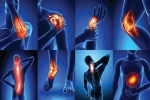Using a Foam Roller to Relieve Neck Pain
A foam roller also called a styrofoam cylinder, may help you reduce pain, tender spots, and stiffness in your neck and upper back. Keep the following tips in mind when you use a foam roller to stretch your muscles or perform a self-massage. Roll Out Your Knots - Slowly roll the foam roller until you find a tender spot or trigger point. Then apply gentle, steady pressure to that spot until the pain subsides, but no longer than 60 seconds.























